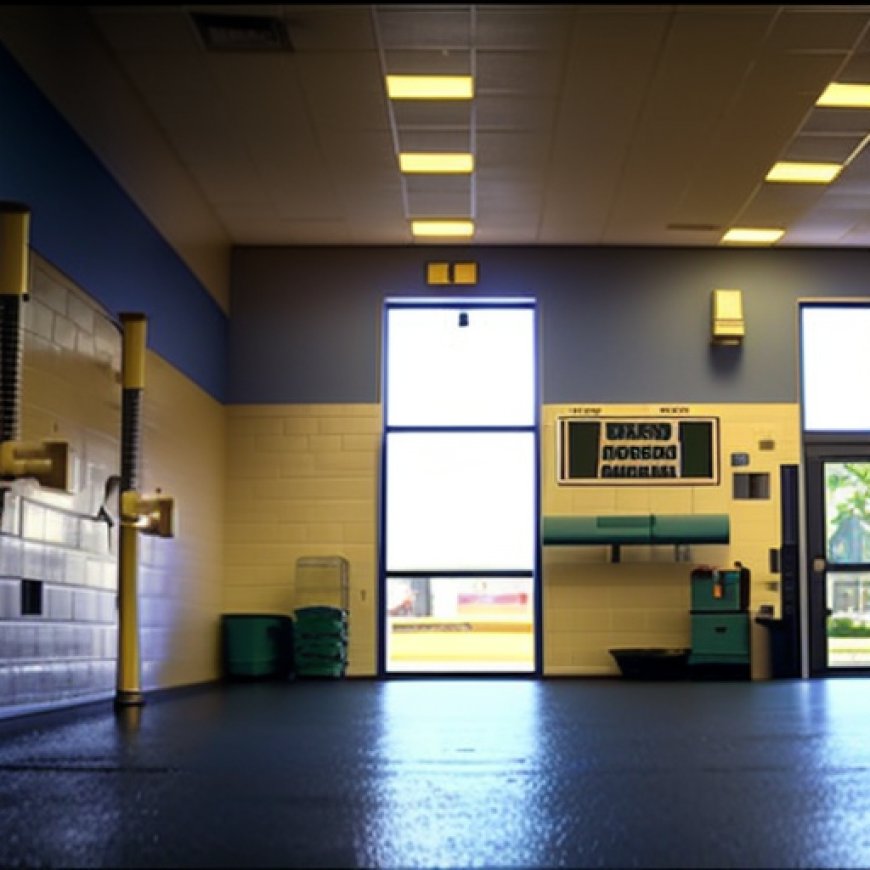Volusia elementary school celebrates new water, wastewater services
Volusia elementary school celebrates new water, wastewater services WMFE


Water Celebration Honors DeLeon Springs’ New Access to Water and Wastewater Services
McInnis Elementary is hosting a “Water Celebration” on Friday at 9 a.m. to commemorate DeLeon Springs’ recent access to water and wastewater services. The event will bring together community advocates, local and state officials, and will feature student presentations of water-related projects.
The celebration is particularly significant for McInnis Elementary, as it is the first commercial building along a three-mile stretch of U.S. Highway 17 in DeLeon Springs to connect to DeLand’s water and centralized sewer systems. The project was managed by Volusia County, but maintenance duties will now be taken over by the city of DeLand due to its utility service area including the unincorporated area of DeLeon Springs.
This project has introduced centralized sewer systems to DeLeon Springs, eliminating the need for traditional septic systems. The new sewer piping in the ground is capable of meeting the area’s current and future demand, ensuring that wastewater is properly treated instead of being released into the environment untreated.
Benefits for Sustainable Development Goals (SDGs)
- SDG 6: Clean Water and Sanitation – The project provides access to clean water and improved sanitation facilities for the community of DeLeon Springs.
- SDG 11: Sustainable Cities and Communities – The introduction of centralized sewer systems contributes to the development of sustainable cities and communities by improving infrastructure and reducing pollution.
- SDG 12: Responsible Consumption and Production – The project promotes responsible consumption and production by replacing traditional septic systems with more efficient and environmentally friendly wastewater treatment methods.

Water Resources and Utilities
/
Volusia County
This project is just the beginning, as there are plans to extend the utility services to other parts of DeLeon Springs in the future. The goal is to make septic systems a thing of the past and reduce pollutants in the DeLeon Spring, which is classified as “impaired” by Florida’s Department of Environmental Protection (FDEP).
Property owners in DeLeon Springs can apply for county-issued rebates of up to $10,000 per septic system upgrade to offset improvement costs. This program is funded by FDEP and promotes responsible consumption and production.
A “Watershed Moment” for DeLeon Springs
The Water Celebration holds special significance for Amy Munizzi, a resident of DeLeon Springs and
SDGs, Targets, and Indicators
SDG 6: Clean Water and Sanitation
– Target 6.1: By 2030, achieve universal and equitable access to safe and affordable drinking water for all.
– Indicator 6.1.1: Proportion of population using safely managed drinking water services.
SDG 11: Sustainable Cities and Communities
– Target 11.1: By 2030, ensure access for all to adequate, safe, and affordable housing and basic services and upgrade slums.
– Indicator 11.1.1: Proportion of urban population living in slums, informal settlements, or inadequate housing.
SDG 12: Responsible Consumption and Production
– Target 12.4: By 2020, achieve the environmentally sound management of chemicals and all wastes throughout their life cycle, in accordance with agreed international frameworks, and significantly reduce their release to air, water, and soil to minimize their adverse impacts on human health and the environment.
– Indicator 12.4.2: Hazardous waste generated per capita and proportion of hazardous waste treated, disaggregated by treatment method.
Analysis
1. The SDGs addressed or connected to the issues highlighted in the article are SDG 6 (Clean Water and Sanitation), SDG 11 (Sustainable Cities and Communities), and SDG 12 (Responsible Consumption and Production).
2. Specific targets under those SDGs identified based on the article’s content are:
– Target 6.1: Achieve universal and equitable access to safe and affordable drinking water for all.
– Target 11.1: Ensure access for all to adequate, safe, and affordable housing and basic services and upgrade slums.
– Target 12.4: Achieve the environmentally sound management of chemicals and all wastes throughout their life cycle, and significantly reduce their release to air, water, and soil to minimize their adverse impacts on human health and the environment.
3. Indicators mentioned or implied in the article that can be used to measure progress towards the identified targets are:
– Indicator 6.1.1: Proportion of population using safely managed drinking water services.
– Indicator 11.1.1: Proportion of urban population living in slums, informal settlements, or inadequate housing.
– Indicator 12.4.2: Hazardous waste generated per capita and proportion of hazardous waste treated, disaggregated by treatment method.
4. Table presenting the findings:
| SDGs | Targets | Indicators |
|——|———|————|
| SDG 6: Clean Water and Sanitation | Target 6.1: Achieve universal and equitable access to safe and affordable drinking water for all. | Indicator 6.1.1: Proportion of population using safely managed drinking water services. |
| SDG 11: Sustainable Cities and Communities | Target 11.1: Ensure access for all to adequate, safe, and affordable housing and basic services and upgrade slums. | Indicator 11.1.1: Proportion of urban population living in slums, informal settlements, or inadequate housing. |
| SDG 12: Responsible Consumption and Production | Target 12.4: Achieve the environmentally sound management of chemicals and all wastes throughout their life cycle, and significantly reduce their release to air, water, and soil to minimize their adverse impacts on human health and the environment. | Indicator 12.4.2: Hazardous waste generated per capita and proportion of hazardous waste treated, disaggregated by treatment method. |
Behold! This splendid article springs forth from the wellspring of knowledge, shaped by a wondrous proprietary AI technology that delved into a vast ocean of data, illuminating the path towards the Sustainable Development Goals. Remember that all rights are reserved by SDG Investors LLC, empowering us to champion progress together.
Source: wmfe.org

Join us, as fellow seekers of change, on a transformative journey at https://sdgtalks.ai/welcome, where you can become a member and actively contribute to shaping a brighter future.







